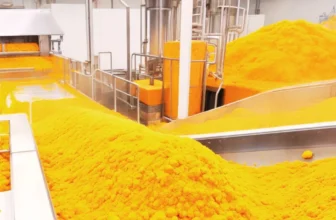Common Pests and Diseases of Red Chili Farms and How We Prevent and Preserve?
Red chili farming, a vibrant segment of agriculture in Pakistan, demands meticulous care to maintain the health and yield of crops. Lyallpur Organics (pvt) Ltd., a prominent provider of organic spices, is deeply invested in sustainable agricultural practices to ensure the finest quality of red chilies. Common Pests and Diseases of Red Chili Farms and How We Prevent and Preserve? This question highlights the importance of effective pest and disease management strategies.
Red chili, known scientifically as Capsicum, is a staple in many cuisines worldwide. The crop’s success is significantly influenced by the health of the plants, which can be compromised by various pests and diseases. Effective management and preventive measures are essential to sustain a thriving red chili farm.
Table of Contents
Common Pests in Red Chili Farms
The health and productivity of red chili farms are significantly impacted by the prevalence of common pests and diseases. Understanding and addressing these threats is crucial for maintaining high-quality yields. By implementing effective strategies outlined in the guide “Common Pests and Diseases of Red Chili Farms and How We Prevent and Preserve,” farmers can safeguard their crops from harmful pests and diseases, ultimately ensuring a sustainable and profitable agricultural venture.
Aphids
Aphids, commonly referred to as plant lice or greenfly, are small insects that suck sap from plants, causing stunted growth and yellowing of leaves. They also transmit viral diseases.
Prevention and Control:
- Biological Control: Introducing natural predators such as ladybugs and lacewings.
- Integrated Pest Management (IPM): Utilizing IPM strategies that include monitoring and employing organic insecticides if necessary.
- Sanitation: Maintaining farm hygiene to reduce aphid populations.
Thrips
Thrips, or fringe-winged insects, damage plants by puncturing and sucking out the cell contents. This leads to silvering of leaves and stunted growth.
Prevention and Control
- Monitoring: Regularly inspecting plants for early signs of thrip infestation.
- Biological Control: Releasing natural enemies like predatory mites.
- Fungicides: Using specific fungicidal sprays to manage thrip populations effectively.
Mites
Spider mites, part of the acari family, are tiny pests that cause yellow speckling on leaves and can lead to severe plant damage if untreated.
Prevention and Control
- Biological Control: Introducing predatory mites to keep spider mite populations in check.
- IPM Techniques: Combining cultural practices with chemical controls if necessary.
- Sanitary Practices: Ensuring cleanliness to minimize mite breeding grounds.

Common Diseases in Red Chili Farms
Viral Infections
Plant viruses can cause significant yield losses. Symptoms include mosaic patterns on leaves, leaf curling, and overall plant decline.
Prevention and Control
- Resistant Varieties: Planting disease-resistant chili varieties.
- Quarantine Measures: Isolating infected plants to prevent spread.
- Sanitary Practices: Sterilizing tools and equipment to reduce virus transmission.
Bacterial Spot
Bacterial blight, caused by Xanthomonas Campestris, manifests as water-soaked lesions on leaves and fruits, leading to defoliation and fruit drop.
Prevention and Control
- Disease-Resistant Plants: Growing varieties resistant to bacterial infections.
- Sanitary Practices: Removing and destroying infected plant material.
- Copper-Based Fungicides: Applying copper sprays to control bacterial spread.
Anthracnose
Anthracnose, a fungal disease caused by Colletotrichum, affects fruits, leading to sunken lesions and fruit rot.
Prevention and Control
- Crop Rotation: Rotating chili crops with non-host plants to break the disease cycle.
- Fungicidal Sprays: Applying recommended fungicides during high humidity periods.
- Farm Hygiene: Removing and destroying affected plant debris.
Powdery Mildew
Powdery mildew, caused by Erysiphales, appears as a white powdery substance on leaves, reducing photosynthesis and plant vigor.
Prevention and Control
- Resistant Strains: Planting mildew-resistant chili varieties.
- Fungicidal Treatments: Using appropriate fungicides at the first sign of infection.
- Cultural Practices: Ensuring adequate spacing between plants for air circulation.

Sustainable Agricultural Practices for Prevention
Crop Rotation
Implementing crop sequencing to rotate chili plants with legumes or other non-host crops helps in managing soil fertility and reducing pest and disease buildup.
Organic Farming
Adopting organic cultivation practices helps in maintaining soil health and reducing chemical usage. Natural farming methods include using compost, green manures, and organic pesticides.
Biological Control
Employing natural enemies such as predators, parasitoids, and pathogens to control pest populations naturally reduces the reliance on chemical pesticides.

Preservation Techniques for Red Chili Farms
Post-Harvest Handling
Proper post-harvest handling ensures the quality and shelf-life of red chilies. This includes careful harvesting, drying, and storage practices.
Drying Methods
- Sun Drying: Traditional method but requires protection from dust and pests.
- Mechanical Drying: Using dryers to ensure uniform drying and prevent mold growth.
Storage Practices
- Climate Control: Storing dried chilies in a cool, dry place to prevent moisture buildup and fungal growth.
- Airtight Containers: Using sealed containers to protect from insects and humidity.
Pest and Disease Monitoring
Regular surveillance and observation of chili crops help in early detection and management of pests and diseases. This includes field scouting and using traps or sensors.
Conclusion
Effective management of pests and diseases in red chili farms is crucial for maintaining healthy crops and achieving high yields. By adopting sustainable practices such as organic farming, biological control, and crop rotation, farmers can reduce the impact of pests and diseases. Lyallpur Organics (pvt) Ltd. is committed to promoting these practices to ensure the production of high-quality organic spices. Implementing these strategies will help in preventing and preserving red chili crops, securing the livelihood of farmers and contributing to the agricultural economy.
Other Top Products
-
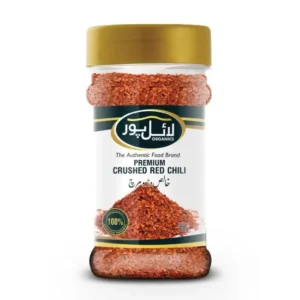 Premium Crushed Red Chili (Crushed Lal Mirch, Darra Mirch) – 100% Natural & Pure | Super Spicy Flavour & Vibrant Color | Best Price in Pakistan₨ 219.00 – ₨ 780.00Price range: ₨ 219.00 through ₨ 780.00★★★★★
Premium Crushed Red Chili (Crushed Lal Mirch, Darra Mirch) – 100% Natural & Pure | Super Spicy Flavour & Vibrant Color | Best Price in Pakistan₨ 219.00 – ₨ 780.00Price range: ₨ 219.00 through ₨ 780.00★★★★★ -
 Premium Black Cumin (Kala Zeera) – 100% Natural Organic & Pure | Intense Flavour & Rich Aroma | Best Price in Pakistan₨ 373.00 – ₨ 860.00Price range: ₨ 373.00 through ₨ 860.00★★★★★
Premium Black Cumin (Kala Zeera) – 100% Natural Organic & Pure | Intense Flavour & Rich Aroma | Best Price in Pakistan₨ 373.00 – ₨ 860.00Price range: ₨ 373.00 through ₨ 860.00★★★★★ -
 Premium Kishmish (Raisin) Sundarkhani – 100% Natural Organic & Pure | Rich in Nutrients & Sweet Flavour | Best Price in Pakistan₨ 281.00 – ₨ 410.00Price range: ₨ 281.00 through ₨ 410.00
Premium Kishmish (Raisin) Sundarkhani – 100% Natural Organic & Pure | Rich in Nutrients & Sweet Flavour | Best Price in Pakistan₨ 281.00 – ₨ 410.00Price range: ₨ 281.00 through ₨ 410.00 -
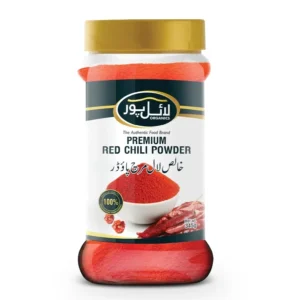 Premium Red Chili Powder (Lal Mirch Powder) – 100% Natural & Pure | Hot Spicy Flavour & Vibrant Color | Best Price in Pakistan₨ 200.00 – ₨ 1,015.00Price range: ₨ 200.00 through ₨ 1,015.00
Premium Red Chili Powder (Lal Mirch Powder) – 100% Natural & Pure | Hot Spicy Flavour & Vibrant Color | Best Price in Pakistan₨ 200.00 – ₨ 1,015.00Price range: ₨ 200.00 through ₨ 1,015.00 -
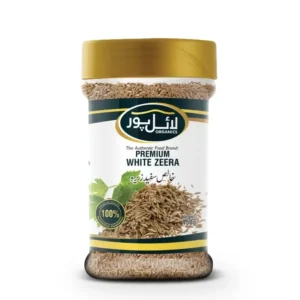 Premium White Cumin (Safaid Zeera) – 100% Natural Organic & Pure | Delicate Flavour & Rich Aroma | Best Price in Pakistan₨ 280.00 – ₨ 624.00Price range: ₨ 280.00 through ₨ 624.00
Premium White Cumin (Safaid Zeera) – 100% Natural Organic & Pure | Delicate Flavour & Rich Aroma | Best Price in Pakistan₨ 280.00 – ₨ 624.00Price range: ₨ 280.00 through ₨ 624.00 -
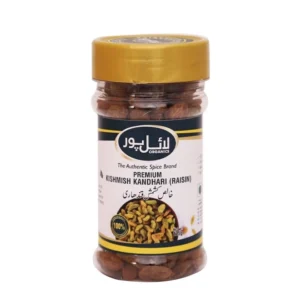 Premium Kishmish (Raisin) Kandhari – 100% Natural & Pure | Rich in Nutrients & Sweet Flavour | Best Price in Pakistan₨ 200.00 – ₨ 260.00Price range: ₨ 200.00 through ₨ 260.00
Premium Kishmish (Raisin) Kandhari – 100% Natural & Pure | Rich in Nutrients & Sweet Flavour | Best Price in Pakistan₨ 200.00 – ₨ 260.00Price range: ₨ 200.00 through ₨ 260.00



